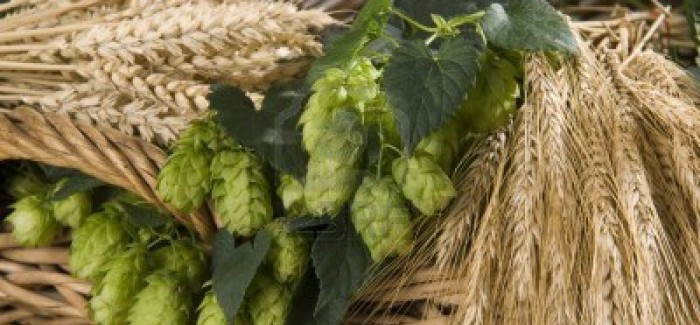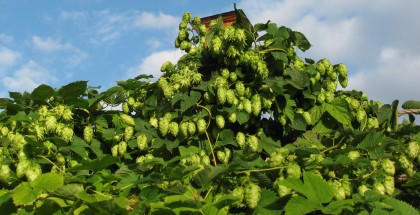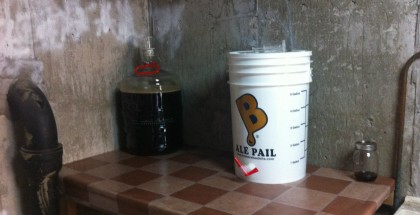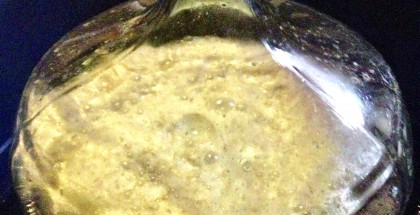Homebrewing – Define Your Style
From the first extract beer kit that I ever brewed (a Ferocious IPA kit, that turned out very well), I was hooked. With time my recipes got more and more complex and my kitchen stove and 3.5 gallon pot turned into a 20 gallon all-grain, three-tiered brewhemoth that takes up half of my garage. As I have developed as a brewer, my approach and outlook towards brewing beer has changed. Here are three major ways that I have developed and practices that I employ in every batch of homebrew.
The KISS Rule. Keep it simple, stupid! The more and more I brew and become critical of my own beer, I realize that I like specific flavors and combinations. In my recipes, I try to keep it simple with relatively round grain percentages. Similarly, I try to limit myself to three or four different malts in my malt bill. I find that once I have used more than three or four different malts, the flavors get muddled, and the whole intention of adding that extra specific malt for flavor or aroma was completely useless. I take a similar approach to hops. I try not to use more than three different hop varietals in the same recipe. Again, hop flavors are all slightly different and I really like when I can pick out the specific hop characteristics in my final product. Of course with every rule, there is an exception. While I generally stick to the three or four hops rule, I break the malt rule when brewing big, dark, malty beers. Russian Imperial Stouts, Belgian Dark Strong Ales, Eisbock, Old Ale, etc. These styles are all defined by their big flavors and subtle malty, nuances. I think these beers benefit from a muddled complexity. Since these beers also toy with alcohol warmth, it really makes itself an absolute disco in your mouth. With my Imperial stouts and Belgian Strong Ales, I will generally use about six different malt varieties. This way I can play with my drinkers palate. The flavors they taste may include caramel, burnt sugar, dark fruits, coffee, chocolate etc. and they will likely notice different ones at different points. I like to keep people guessing, and keep them coming back for more.
The Brew Like a Chef Rule. Not only is it important to use the freshest ingredients, but to use ones that match the style you’re brewing. Fact: America is very different from England, which is very different from Belgium. When brewing a Belgian beer, I try and use Belgian malts, when making an American beer, American malts and hops. Its sounds too easy, but think regionally. Would you use wasabi and soy sauce to make a béarnaise sauce? I didn’t think so. Are you going to make a a stir-fry with moldy broccoli? Nope. The malts produced by different maltsters are all kilned slightly differently and the origin of the barley is different. While switching an American Pale base malt for a Belgian Pale base malt may not make any difference alcohol or color wise, the flavor at the end will be slightly different, and if you’re trying to build that award-winning Belgian Tripel recipe, use only the freshest Belgian ingredients. Don’t be afraid to taste ingredients for freshness and flavor prior to brewing with them. When I’m at my local homebrew store, I taste every malt before I buy it. Check the package date on your liquid yeast packages and the date of your hops. Don’t overlook any single ingredient including your water.
The Chivalry Isn’t Dead Rule. Treat your yeast with respect. Open doors, push in chairs, say please and thank you and treat your yeast like the most amazing person in your life. The old brewer’s adage ‘Brewers’ make wort, yeast makes beer’ is absolutely correct. If there is one thing that I did to improve my homebrew it was to improve the life of my yeast. Pitch the right number of healthy cells. If you don’t know how many cells to pitch, there are many great resources available on the internet. Maintain and monitor fermentation temperatures closely. I always make a yeast starter. Pitching yeast at their healthiest and most active stage of growth will get your fermentation off to a healthy start.
While every homebrewer goes through their own development throughout their brewing tenure, these are some of the tricks I have learned and adapted into my brewing style resulting in wonderful and consistent beers.. As you continue to homebrew, reflect on your adventure and the ways that you have developed and improved. Happy Homebrewing!
Tags
#homebrew-
Nice article Phil! Funny that Tristan’s first (and only) brew was Ferocious aka “Rapture” IPA as well.








Comments